It’s all about Sony VAIO P Series.All the updates of Sony VAIO P Series like Look and feel,Keyboard and mouse options,Screen and accelerometer,Wrap-up,Miniscule marvel etc yo can see in this news……
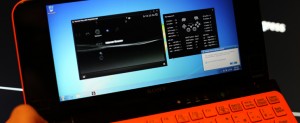
The first Sony Vaio P-series mini-laptop left us with mixed feelings. We liked its tiny size and ambitious design, but not its high price and lack of a trackpad. Sony’s latest Vaio P-series machine offers upgraded hardware and a few new features to tickle our collective fancy. The basic version that we review here, the Vaio VPCP11S1E/P, is still a pricey piece of kit though. Does this revamped pygmy do enough to justify its £800 price tag?
Relatively similar to the First Vaio P, our newest edition however, comes with many little improvements as well as some design tweaks. Keeping the same Hi-res screen, our Vaio P with its 8” 1600 x 768 monitor comes now, like most of the compact notebooks, with a kind of optical sensor provided on the left of the screen and mouse buttons on the right. Unlike the previous Generation both the power switch and Wireless Lan Switch are now located on the side of our Vaio P rather than on its front. Add to this are a new set of colors and “Voila” the only major differences between our 2 generations of Vaio P.
Without a doubt, the VAIO P’s long and thin form factor continues to be one of the most unique looking gadgets in the ether. And it still truly turns heads: when we left the P on our desk, more than a few bystanders came over to inquire about its origins. Sony has tweaked the aesthetic a bit, and thankfully removed the glossy lid; it’s now available in a matte orange, neon green, hot pink, white and black. It’s not difficult to see why we prefer the white and black options since the color appears on more than just the lid, but those into more vivacious scenes may disagree. As previously teased, when shut it looks like a paper clip — the color loops from the lid onto the bottom, and then to the keyboard. Though it doesn’t have that shiny or silvery look anymore, the P is still a looker, if that’s what you’re worried about.
It also remains incredibly light and well built; at 1.3-pounds, the .78-inch thin netbook can fit into a small bag or can be tucked into a suit jacket pocket, but let’s be real, beyond the models in marketing images no one puts this thing in a jean pocket. Yet despite its portability, it’s hard to use in certain situations: we continuously found it difficult to use on a lap or while lying down on a couch, primarily because a bona fide palm rest is nowhere to be found. Holding it up and navigating the desktop using the new touchpad on the screen bezel is actually comfortable if you have to access some info on the run, but it’s hardly something you’d use long-term. The P still lacks in port selection — it only has two USB jacks, a headphone socket, SD and MemoryStick slots, and an expansion port for attaching a VGA / Ethernet .
Although “physically” speaking our new Vaio P does not feature much change after all, things get more interesting once you boot-up our little new wonder … By default, Sony revised the Vaio P specs and now bring more RAM with 2GB instead of 1GB, a more powerful CPU with an Atom Z530 @ 1.6Ghz instead of the usual Z520 and its 1.33Ghz, and by default 64GB of SSD in place of the usual HDD.
On the paper this may sound already much for most of you, however, there is even more to it. First of all, it is when you start using the Vaio P on a daily basis that you notice how faster this New P is compared to the previous stock generation. Added to this, there is now better power management bring-up thanks to Sony’s hardware change and software optimization, a battery life announced at 5.5h instead of the previous 4h hours.
Feeling “lighter”, Windows 7 runs pretty smoothly for your everyday tasks on this new Vaio P, and we do not have much to complain about it. Sure we would love to be able to watch full HD Videos running smoothly or to hook a “Blu-Ray” player and watch our favorite movies on-the-go, but come on, let’s be reasonable here. We agree that it would indeed be pretty nice but the Vaio P may just be a little bit underpowered in its stock version to be fully capable of giving us this yet, then why don’t we keep on enjoying our average DivX.
Believe it: we typed this entire review on the VAIO P’s small keyboard. We wouldn’t exactly call it a pleasant experience, but given the space constraints, the chiclet layout was actually comfortable enough. Though the plastic keys are a bit clicky, they’re fine for firing off short emails, and by the fourth or fifth paragraph of this review we were touch typing with very few typos.
Now we appreciate our new Vaio P’s specs bump, but there are also 3 new gizmos in our new computer that are worth mentioning and that do really make this new P worth checking if you are looking for a compact and stylish notebook.
In terms of storage, the VPCP11S1E/P comes with a 64GB flash drive. That’s not a huge amount of storage, especially once the operating system and pre-installed software have had their way with it. Still, it’s probably as much space as you’ll need — this laptop isn’t really powerful enough for you to enjoy much video content, and it won’t play games.
The VAIO P still has a pointing stick smack in the middle of the keyboard, and long left and right mouse buttons below the keys, but an optical touchpad has been added to the right screen bezel and two small left- and right- click buttons to the left side. Dubbed the mobile nav grip by Sony, the idea is that you’d end up wrapping your hands around the screen to surf the web, and while that may seem awkward to have the keyboard hanging below, it was actually quite comfortable. We definitely defaulted to using the pointing stick or external mouse when working in clamshell mode on the laptop, but when we just wanted to quickly look something up, it was convenient to grab the touchpad and select a bookmark. Frankly, though, a full-on touchpanel would be far easier to use that what we’re given here, and we’ll be touching a bit more on this point in just a bit.
We still have major issues with the 8-inch, 1600 x 768-resolution display, and in short it’s just incredibly squint-inducing. Sure, everything is super sharp, but it requires you to really stick your face into the screen to see — not exactly the most natural way to use a laptop. For instance, when we loaded Engadget, we really had to hunch over while sitting at a desk to read the text — and reading the comments… you may as well forget about it. While there’s a zoom tool on the keyboard for this default resolution, we much preferred switching the it to 1280 x 600 by hitting the shortcut button beneath the keyboard. While you have to side scroll quite a bit with this screen setting, it’s much easier on the eyes. Other than that, we wish Sony had swapped the glossy screen for a matte one — it would have made it much easier to use outdoors.
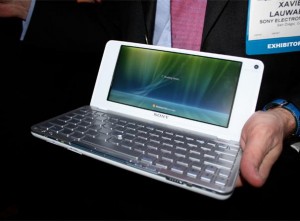
The second-generation VAIO P sure is faster than the first, but keep in mind that when we first tested the VAIO P at CES 2009 it came with Vista. With that said, our unit’s 1.60GHz Z530 Intel Atom processor and 2GB of RAM kept up with our web browsing and writing in Microsoft Office 2010, but showed more lag than other netbooks when trying to move around within Windows 7 Home Premium; that’d probably explain the 2.3 Windows experience score. Sony will offer the P with a faster Z560 Atom processor for a few extra bucks. We do attribute a bit of the lag to the amount of crapware that comes on the system — the 64GB SSD only had 30GB of space left when we booted it for the first time. Removing Accuweather’s widget, Shutterfly Photo Books, ArcSoft Magic-i, Webcam Companion 3, and Evernote for VAIO helped speed things up and make some space on the drive, but that’s a chore no man or woman should have to endure under any circumstance. We should also mention that you can boot the Splashtop instant-on OS by hitting the Web shortcut key, but honestly, you probably never will. The Assist Key launches VAIO Care, which is actually a nice utility for tweaking settings.
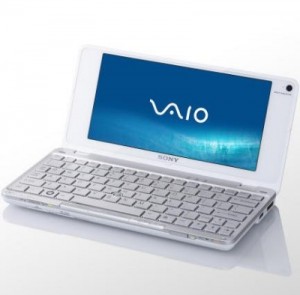
The very first noticeable improvement comes with the addition of an optical keypad on the left of the screen and mouse button on its right. Far more than just a simple gadget, this new mouse is in fact extremely useful when holding the Vaio P with your 2 hands standing up or in a crowded environment. The second very useful thingy is our Vaio P’s movement sensor that will automatically rotate your screen orientation if you are tilting the Vaio P to the left or to the right giving you a nice screen real-estate for either reading articles on the web or any kind of e-Book.
The last but not the least, it comes with the Vaio P Support of the PS3 Remote Play and Remote Keyboard. Like your PSP, our P is now capable of giving you direct access to your PS3 just as your PSP and does pretty much everything that Sony are allowing you with the Remote Play. If indeed you can hook-up your Vaio P to a PS3, the reality is however quite disappointing… The overall experience on Wireless (N) for us was sluggish and dead slow, accessing to Video stored on the PS3 was a real pain and we just had frozen pictures with audio only. Switching from a menu to another was incredibly slow, something that our PSP was doing smoothly just before we tested the Vaio P with the PS3.
So if basic word processing, Email, Web, and light photo editing (Crop, resize), Photo viewing and basic Video playing are what you need on-the-go, the Vaio P with its awesome Screen is a dead winner for us !
Resorces :en.akihabaranews.com,engadget.com

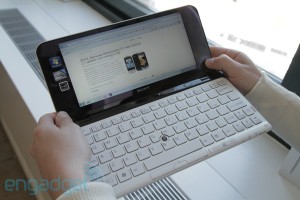
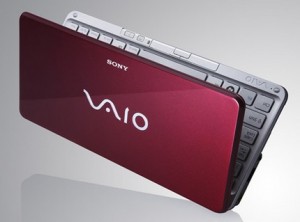
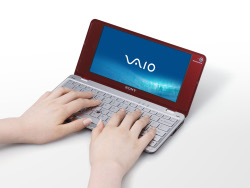
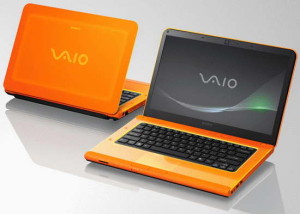
Pingback: Sony Partners with Billabong on Notebook. Really? – Gearlog (blog) | Sony vaio laptop
Pingback: Now available in the US the Sony Vaio W Billabong Edition netbook – Netbook Planet (blog) | Sony vaio laptop
Pingback: SEO
The good things are really small, surprisingly large keyboard, new trackpad to help with navigation and bad things are expensive, poor battery life, squint-inducing display. The first Sony Vaio P-series mini-laptop left us with mixed feelings. I liked its tiny size and ambitious design, but not its high price and lack of a trackpad. Sony’s latest Vaio P-series machine offers upgraded hardware and a few new features to tickle our collective fancy.
http://www.thesonyworld.com/sony-vaio-vpcp11s1ep.html
Read more: http://reviews.cnet.co.uk/laptops/sony-vaio-p-series-vpcp11s1ep-review-49305693/#ixzz13N9HDHcl
The Vaio P series is indeed one gorgeous laptop. I got one as a gift from the fiance, but knowing its price, I probably wouldn’t have bought it for myself. The price is a little too steep for my liking. Also, I have observed that there are other cheaper laptops that have better features than the P series.